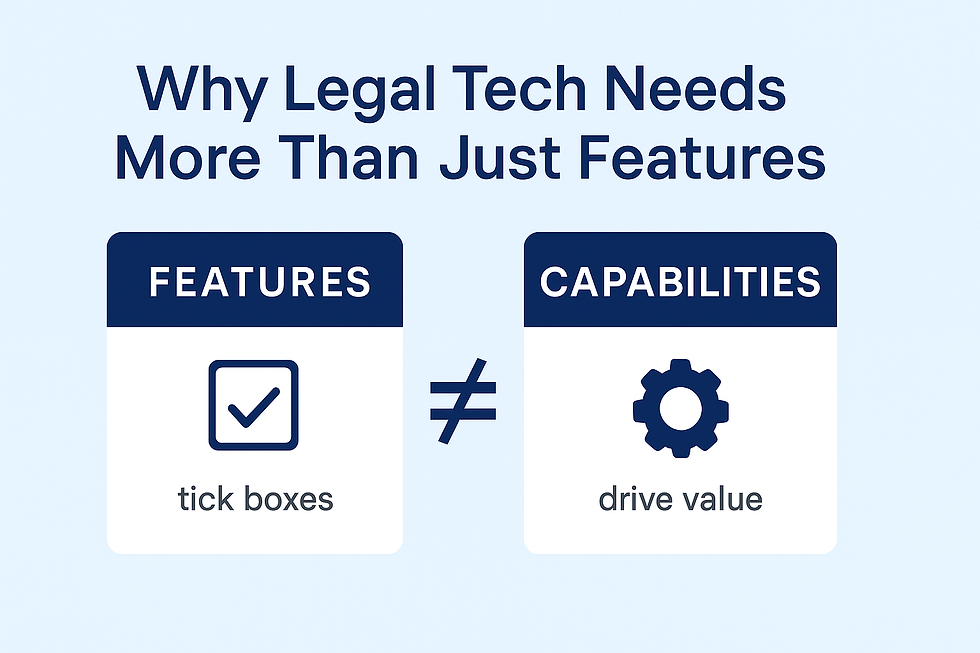Features ≠ Capabilities in Legal Tech
- Shantanu Singh

- Jun 25
- 1 min read
Updated: Jun 30

When evaluating legal tech capabilities, especially contract automation tools, it’s easy to be dazzled by a list of features. At Obviate, we’ve highlighted essential contract-redlining features that our users love:
✔️ Flag indemnity clauses
✔️ Suggest edits
✔️ Compare to fallback (i.e., your approved language baseline)
These are undeniably valuable—but they are features. Check-boxes. What really drives business outcomes? Capabilities.
FEATURES tick boxes; CAPABILITIES drive value.
⚙️ What’s the difference?
Feature: flags a deviation in your contract.
Capability: explains why that language adds risk, what exposures it creates, and how it compares to your fallback language.
Capabilities go deeper—they inform and empower. They don’t just highlight issues; they walk you through the implications and provide mitigation strategies that align with your risk posture.
🤝 From Features to Capabilities in Legal Tech
Feature: may suggest edits.
Capability: acts based on your unique risk assessment, mitigation preferences, and negotiation strategy—tailored to your industry and business model.
Obviate’s autonomous contract review agents understand the mission: manage compliance, reduce risk, and speed up reviews. We don’t just highlight problems—we provide judgment-aligned guidance you can trust, apply, and explain.
Ready to level up?
If you're looking for both speed and depth in your contract reviews—without sacrificing risk clarity—Obviate can help.
✅ Instant redlines
✅ Structured risk analysis
✅ Playbook-aligned edits—no prompts or training required
Sign up for a free trial today at https://www.obviate.ai/get-started.

